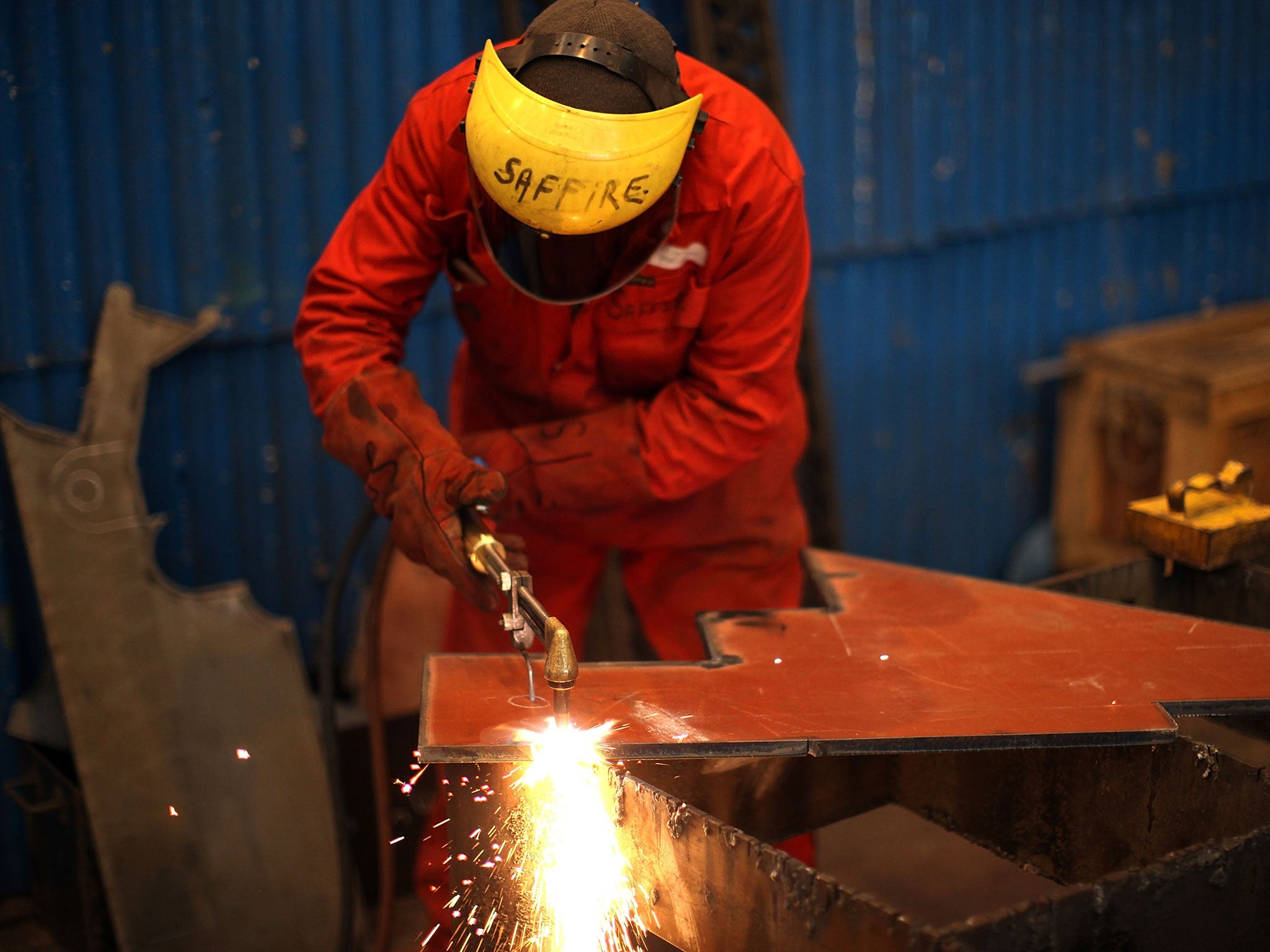The next interest rate rise now looks to be a more distant prospect as the latest snapshot of manufacturing showed activity falling to a 17-month low in September.
The Markit/Cips Purchasing Managers’ Index dipped to 51.6, above the 50 mark that signals growth, but the weakest reading since February 2013. City analysts had expected the reading to remain unchanged on August’s 52.5. “September’s disappointing reading will add to the air of caution as to whether the economy is ready for higher interest rates,” said Rob Dobson of Markit.
Sterling dropped a third of a cent against the dollar to $1.6165, as traders pushed back their bets on the timing of the next rate rise; it subsequently recovered to $1.6209.
“This poor manufacturing reading will add weight to the Monetary Policy Committee’s doves’ argument of keeping rates lower for longer,” said Jake Trask, a corporate dealer at UKForex.
Markit/Cips also reported that manufacturers’ output prices grew at their slowest rate for 15 months in September, suggesting an absence of inflation pressures and another factor that may prompt the MPC to hold off from raising rates until next year.
Manufacturing firms experienced a slowdown in both domestic and export markets, with some speculation that the uncertainty generated by last month’s Scottish referendum might have prompted some businesses to delay orders. But David Noble of Cips said the major drag came from the eurozone, which accounts for around half of the UK’s trade.
He added that this was offset somewhat by better demand from North America, Scandinavia and the Middle East. Official figures showed that manufacturing expanded by 0.5 per cent in the second quarter. Output remains 7.7 per cent below the pre-crisis peak seen in 2008.
The Office for National Statistics also reported that manufacturing productivity, as measured by output per hour, increased by 1.2 per cent in the second quarter of the year. However unit wage costs increased by 0.3 per cent.
Markit/Cips reported that manufacturing job creation accelerated during September, although the rate of increase in payroll numbers remained below those registered during the first half of the year.
Lee Hopley of the manufacturers’ organisation EEF said that the prospects for the sector were still bright: “Our forecasts continue to show output and employment growth through the remainder of this year,” she said.
Subscribe to Independent Premium to bookmark this article
Want to bookmark your favourite articles and stories to read or reference later? Start your Independent Premium subscription today.


Join our commenting forum
Join thought-provoking conversations, follow other Independent readers and see their replies